#STS-61C
Explore tagged Tumblr posts
Text
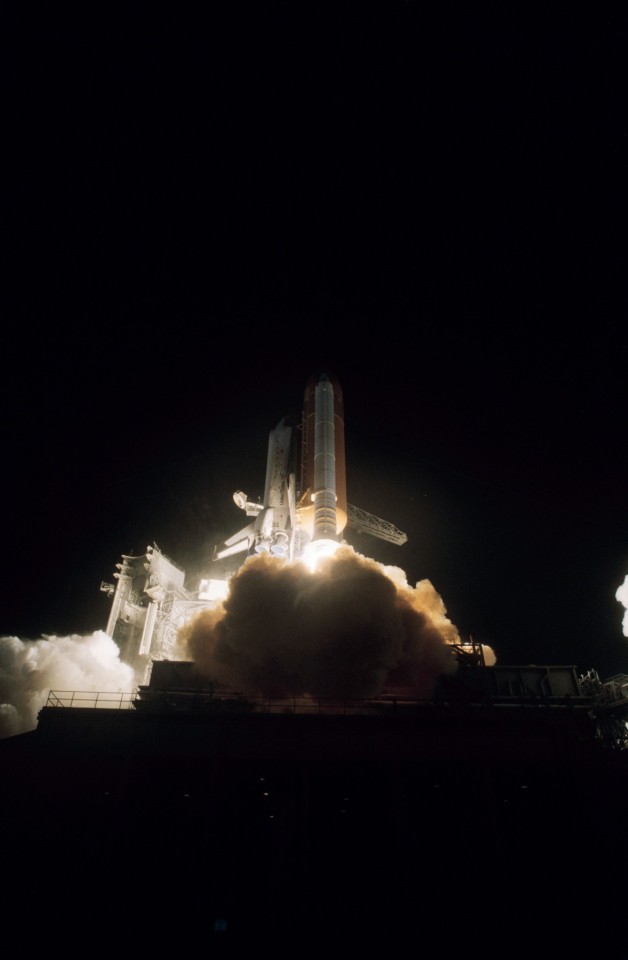

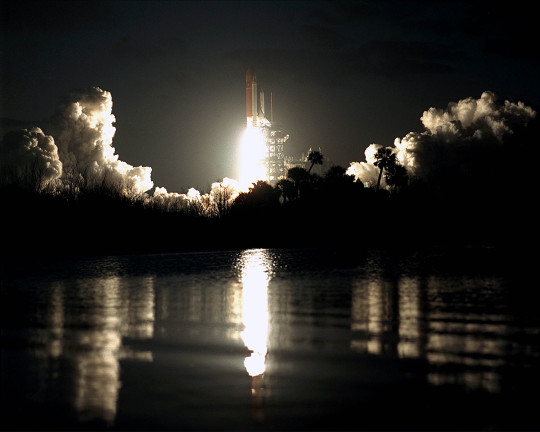
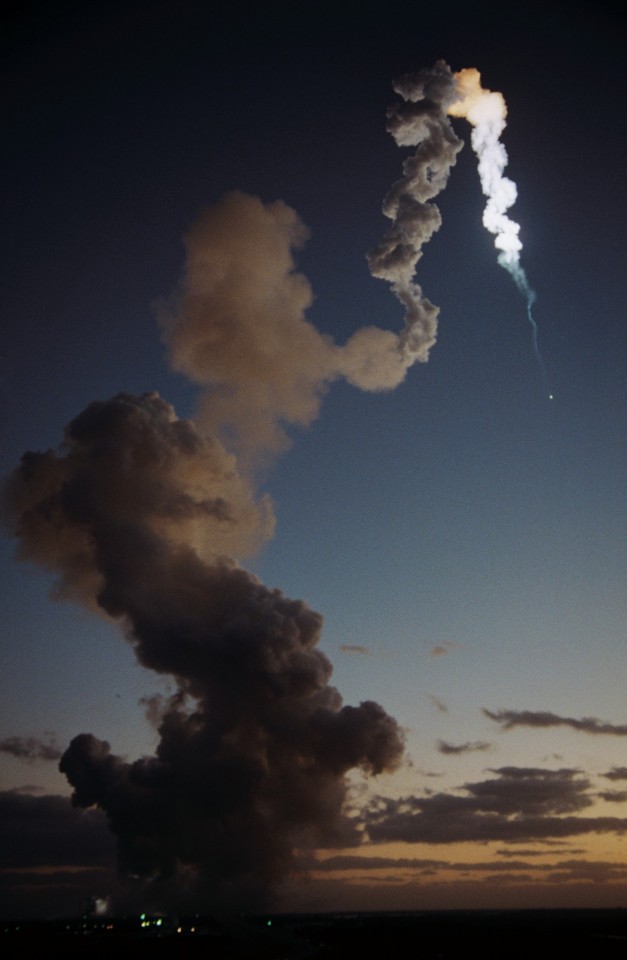
Space Shuttle Columbia launches on STS-61-C.
"Early morning launch at Florida's Kennedy Space Center of the space shuttle Columbia and the STS-61-C crew. Onboard were the following crew members: Mission Commander Robert L. Gibson and Pilot Charles F. Bolden, along with Mission Specialists Franklin R. Chang-Diaz, Steven A. Hawley and George D. Nelson and Payload Specialists Robert J. Cenker of RCA and U.S. Rep. Bill Nelson.
Date: January 12, 1986
NASA ID: STS61C-S-047, STS61C-S-048, KSC-86PC-0012, STS61C-S-046
#STS-61-C#STS-61C#STS-24#Space Shuttle#Space Shuttle Columbia#Columbia#OV-102#Orbiter#NASA#Space Shuttle Program#Launch#LC-39A#Kennedy Space Center#KSC#Florida#January#1986#my post
98 notes
·
View notes
Text




January 12, 1986 — STS-61C Columbia launches after four unsuccessful launch attempts
STS-61C deployed the Satcom-K1 geosynchronous communications satellite and carried numerous smaller scientific experiments. Columbia also carried two future NASA Administrators, Charlie Bolden (served 2009 - 2017) and Bill Nelson (served 2021 - 2025), into space.
13 notes
·
View notes
Link
On Oct. 18, 1989, space shuttle Atlantis took off on its fifth flight, STS-34, from NASA’s Kennedy Space Center (KSC) in Florida. Its five-person crew of Commander Donald E. Williams, Pilot Michael J. McCulley, and Mission Specialists Shannon W. Lucid, Franklin R. Chang-Díaz, and Ellen S. Baker flew a five-day mission that deployed the Galileo spacecraft, managed by NASA’s Jet Propulsion Laboratory in Southern California, to study Jupiter. The astronauts deployed Galileo and its upper stage on their first day in space, sending the spacecraft on its six-year journey to the giant outer planet. Following its arrival at Jupiter in December 1995, Galileo deployed its atmospheric probe while the main spacecraft entered orbit around the planet, studying it in great detail for eight years. Left: The STS-34 crew of Mission Specialists Shannon W. Lucid, sitting left, Franklin R. Chang-Díaz, and Ellen S. Baker; Commander Donald E. Williams, standing left, and Pilot Michael J. McCulley. Middle: The STS-34 crew patch. Right: The Galileo spacecraft in Atlantis’ payload bay in preparation for STS-34. In November 1988, NASA announced Williams, McCulley, Lucid, Chang-Díaz, and Baker as the STS-34 crew for the flight planned for October 1989. Williams and Lucid, both from the Class of 1978, had each flown once before, on STS-51D in April 1985 and STS-51G in June 1985, respectively. Chang-Díaz, selected in 1980, had flown once before on STS-61C in January 1986, while for McCulley and Baker, both selected in 1984, STS-34 represented their first spaceflight. During their five-day mission, the astronauts planned to deploy Galileo and its Inertial Upper Stage (IUS) on the first flight day. Following the Galileo deployment, the astronauts planned to conduct experiments in the middeck and the payload bay. Left: Voyager 2 image of Jupiter. Middle: Galileo as it appeared in 1983. Right: Illustration of Galileo’s trajectory from Earth to Jupiter. Following the successful Pioneer and Voyager flyby missions, NASA’s next step to study Jupiter in depth involved an ambitious orbiter and atmospheric entry probe. NASA first proposed the Jupiter Orbiter Probe mission in 1975, and Congress approved it in 1977 for a planned 1982 launch on the space shuttle. In 1978, NASA renamed the spacecraft Galileo after the 17th century Italian astronomer who turned his new telescope toward Jupiter and discovered its four largest moons. Delays in the shuttle program and changes in the upper stage to send Galileo from low Earth orbit on to Jupiter resulted in the slip of its launch to May 1986, when on Atlantis’ STS-61G mission, a Centaur upper stage would send the spacecraft toward Jupiter. The January 1986 Challenger accident not only halted shuttle flights for 31 months but also canceled the Centaur as an upper stage for the orbiter. Remanifested onto the less powerful IUS, Galileo would require gravity assist maneuvers at Venus and twice at Earth to reach its destination, extending the transit time to six years. Galileo’s launch window extended from Oct. 12 to Nov. 21, 1989, dictated by planetary alignments required for the gravity assists. During the transit, Galileo had the opportunity to pass by two main belt asteroids, providing the first closeup study of this class of objects. Upon arrival at Jupiter, Galileo would release its probe to return data as it descended through Jupiter’s atmosphere while the main spacecraft would enter an elliptical orbit around the planet, from which it would conduct in depth studies for a minimum of 22 months. Left: The Galileo atmospheric probe during preflight processing. Middle: The Galileo orbiter during preflight processing. Right: Space shuttle Atlantis arrives at Launch Pad 39B. The Galileo atmospheric probe arrived at KSC on April 17 and the main spacecraft on May 16, following which workers joined the two together for preflight testing. Meanwhile, Atlantis returned to KSC on May 15, following the STS-30 mission that deployed the Magellan spacecraft to Venus. The next day workers towed it into the Orbiter Processing Facility to prepare it for STS-34. In KSC’s Vehicle Assembly Building (VAB), workers began stacking the Solid Rocket Boosters (SRB) on June 15, completing the activity on July 22, and then adding the External Tank (ET) on July 30. Atlantis rolled over to the VAB on Aug. 22 for mating with the ET and SRBs. Galileo, now mated to its IUS, transferred to Launch Pad 39B on Aug. 25, awaiting Atlantis’ arrival four days later. The next day, workers placed Galileo into Atlantis’ payload bay and began preparations for the Oct. 12 launch. The Terminal Countdown Demonstration Test took place on Sept. 14-15, with the astronauts participating in the final few hours as on launch day. A faulty computer aboard the IUS threatened to delay the mission, but workers replaced it without impacting the planned launch date. The five-member astronaut crew arrived at KSC Oct. 9 for final preparations for the flight and teams began the countdown for launch. A main engine controller problem halted the countdown at T minus 19 hours. The work required to replace it pushed the launch date back to Oct. 17. On that day, the weather at the pad supported a launch, but clouds and rain at the Shuttle Landing Facility several miles away, and later rain at a Transatlantic (TAL) abort site, violated launch constraints, so managers called a 24-hour scrub. The next day, the weather cooperated at all sites, and other than a brief hold to reconfigure Atlantis’ computers from one TAL site to another, the countdown proceeded smoothly. Left: STS-34 astronauts pose following their Sept. 6 preflight press conference. Middle: Liftoff of Atlantis on the STS-34 mission. Right: Controllers in the Firing Room watch Atlantis take to the skies. Atlantis lifted off Launch Pad 39B at 12:53 p.m. EDT on Oct. 18. As soon as the shuttle cleared the launch tower, control shifted to the Mission Control Center at NASA’s Johnson Space Center in Houston, where Ascent Flight Director Ronald D. Dittemore and his team of controllers, including astronaut Frank L. Culbertson serving as the capsule communicator, or capcom, monitored all aspects of the launch. Following main engine cutoff, Atlantis and its crew had achieved orbit. Forty minutes later, a firing of the two Orbital Maneuvering System (OMS) engines circularized the orbit at 185 miles. The astronauts removed their bulky Launch and Entry Suits (LES) and prepared Atlantis for orbital operations, including opening the payload bay doors. Left: Galileo and its Inertial Upper Stage (IUS) in Atlantis’ payload bay, just before deployment. Middle: Galileo and its IUS moments after deployment. Right: Galileo departs from the shuttle. Preparations for Galileo’s deployment began shortly thereafter. In Mission Control, Flight Director J. Milton Heflin and his team, including capcom Michael A. Baker, took over to assist the crew with deployment operations. The astronauts activated Galileo and the IUS, and ground teams began checking out their systems, with the first TV from the mission showing the spacecraft and its upper stage in the payload bay. Lucid raised Galileo’s tilt table first to 29 degrees, McCulley oriented Atlantis to the deployment attitude, then Lucid raised the tilt table to the deploy position of 58 degrees. With all systems operating normally, Mission Control gave the go for deploy. Six hours and 20 minutes into the mission, Lucid deployed the Jupiter-bound spacecraft and its upper stage, weighing a combined 38,483 pounds. “Galileo is on its way to another world,” Williams called down. The combination glided over the shuttle’s crew compartment. Williams and McCulley fired the two OMS engines to move Atlantis a safe distance away from the IUS burn that took place one hour after deployment, sending Galileo on its circuitous journey through the inner solar system before finally heading to Jupiter. The primary task of the mission accomplished, the astronauts prepared for their first night’s sleep in space. STS-34 crew Earth observation photographs. Left: The Dallas-Ft. Worth Metroplex. Middle left: Jamaica. Middle right: Greece. Right: The greater Tokyo area with Mt. Fuji at upper left. For the next three days, the STS-34 astronauts focused their attention on the middeck and payload bay experiments, as well as taking photographs of the Earth. Located in the payload bay, the Shuttle Solar Backscatter Ultraviolet experiment, managed by NASA’s Goddard Space Flight Center in Greenbelt, Maryland, measured ozone in the Earth’s atmosphere and compared the results with data obtained by weather satellites at the same locations. The comparisons served to calibrate the weather satellite instruments. Baker conducted the Growth Hormone Concentrations and Distributions in Plants experiment, that investigated the effect of the hormone Auxin in corn shoot tissue. Three days into the mission, she placed plant canisters into a freezer to arrest plant growth and for postflight analysis. Chang-Díaz and Lucid had prime responsibility for the Polymer Morphology experiment, developed by the 3M Company. They used a laptop to control experiment parameters as the hardware melted different samples to see the effects of weightlessness. Baker conducted several medical investigations, including studying blood vessels in the retina, changes in leg volume due to fluid shifts, and carotid blood flow. Left: The Shuttle Solar Backscatter Ultraviolet experiment in Atlantis’ payload bay. Middle: Ellen S. Baker, right, performs a carotid blood flow experiment on Franklin R. Chang-Díaz. Right: Chang-Díaz describes the Polymer Mixing experiment. Left: The STS-34 crew poses on Atlantis’ fight deck. Middle: Atlantis touches down at Edwards Air Force Base in California. Right: The STS-34 astronauts pose in front of Atlantis. On Oct. 23, the astronauts awakened for their final day in space. Because of high winds expected at the primary landing site at Edwards Air Force Base (AFB), managers moved the landing up by two revolutions. In preparation for reentry, the astronauts donned their orange LESs and closed the payload bay doors. Williams and McCulley oriented Atlantis into the deorbit attitude, with the OMS engines facing in the direction of travel. Over the Indian Ocean, they fired the two engines for 2 minutes 48 seconds to bring the spacecraft out of orbit. They reoriented the orbiter to fly with its heat shield exposed to the direction of flight as it encountered Earth’s atmosphere at 419,000 feet. The buildup of ionized gases caused by the heat of reentry prevented communications for about 15 minutes but provided the astronauts a great light show. The entry profile differed slightly from the planned one because Atlantis needed to make up 500 miles of cross range since it returned two orbits early. After completing the Heading Alignment Circle turn, Williams aligned Atlantis with the runway, and McCulley lowered the landing gear. Atlantis touched down and rolled to a stop, ending a 4-day 23-hour 39-minute flight, having completed 79 orbits of the Earth. Following postlanding inspections, workers placed Atlantis atop a Shuttle Carrier Aircraft, a modified Boeing-747, and the combination left Edwards on Oct. 28. Following refueling stops at Biggs Army Airfield in Texas and Columbus AFB in Mississippi, Atlantis and the SCA arrived back at KSC on Oct. 29. Workers began to prepare it for its next flight, STS-36 in February 1990. Left: An illustration of Galileo in orbit around Jupiter. Right: Galileo’s major mission events, including encounters with Jupiter’s moons during its eight-year orbital study. One hour after deployment from Atlantis, the IUS ignited to send Galileo on its six-year journey to Jupiter, with the spacecraft flying free of the rocket stage 47 minutes later. The spacecraft’s circuitous path took it first to Venus on Feb. 10, 1990, back to Earth on Dec. 8, 1990, and again on Dec. 8, 1992, each time picking up velocity from the gravity assist to send it on to the giant planet. Along the way, Galileo also passed by and imaged the main belt asteroids Gaspra and Ida and observed the crash of Comet Shoemaker-Levy 9 onto Jupiter. On Dec. 7, 1995, the probe plummeted through Jupiter’s dense atmosphere, returning data along the way, until it succumbed to extreme pressures and temperatures. Meanwhile, Galileo entered orbit around Jupiter and far exceeded its 22-month primary mission, finally plunging into the giant planet on Sept. 21, 2003, 14 years after leaving Earth. During its 35 orbits around Jupiter, it studied not only the planet but made close observations of many of its moons, especially its four largest ones, Ganymede, Callisto, Europa, and Io. Left: Galileo image of could formations on Jupiter. Right: Closeup image of terrain on Europa. Of particular interest to many scientists, Galileo made 11 close encounters with icy Europa, coming as close as 125 miles, revealing incredible details about its surface. Based on Galileo data, scientists now believe a vast ocean lies beneath Europa’s icy crust, and heating from inside the moon may produce conditions favorable for supporting life. NASA’s Europa Clipper, launched on Oct. 14, 2024, hopes to expand on Galileo’s observations when it reaches Jupiter in April 2030. Enjoy the crew narrated video of the STS-34 mission. Read Williams‘ recollections of the STS-34 mission in his oral history with the JSC History Office. Explore More 12 min read Five Years Ago: First All Woman Spacewalk Article 3 days ago 6 min read Cassini Mission: 5 Things to Know About NASA Lewis’ Last Launch Article 6 days ago 24 min read NASA Celebrates Hispanic Heritage Month 2024 Article 1 week ago
1 note
·
View note
Photo
[ID: An image of Ace McShane from Classic Doctor Who, from the serial 'Remembrance of the Daleks', showing all of the pins on her leather jacket. Text on the image reads 'Compiled by Nathaniel King, David Nagel, & Kurt Bergeron. The pins are:
1. U.S.S.R./C.C.C.P. Soviet Army Star Pin
2. NASA Enterprise Approach Landing Test Shuttle Patch
3. Free to Fly Harley Davidson Pin (Upside Down)
4. Triumph Pin
5. 1986 Watchmen Pin
6. S.B.I. Magnify Glass Patch
7. Harley Davidson Eagle Pin
8. Kings Full of Aces Pin
9. Metal Whistle
10. Rupert Bear Club Pin
11. American Football Pin
12. Charlton Athletic Pin (Yellow Base)
13. NASA STS-61C Columbia Patch (Season 26 replaced with STS-518 Atlantis Mission Patch)
14. Pirate Pin
15. Ace Roofing Co. Lee
16. Carnaby Street Union Jack Pin
17. Blue Peter Pin (White)
18. Blue Peter Pin (Blue)
19. American Flag Pin
20. Fanderson Pin
21. Pirate Skull with Cross Swords Button
22. NASA STS-51L Challenger Patch
23. Lacrosse Pin
24. Poker Hand Pin (Top Card Ace of Diamonds)
25. Thunderbirds Pin
26. NASA Space Shuttle Pin
27. Ride to Live, Live to Ride Pin
28. Safe Driver Bell Atlantic Patch
29. U.S.S.R./C.C.C.P. Star Patch
30. Nuclear Power? No Thanks Pin
31. Soccer Ball Patch
32. United States Paratrooper Patch
33. 1983 Spiderman Pin
34. B.C. Rich Doubleneck Guitar Pin
35. Brands Hatch Pin
36. 1987 Patch
37. B.S.A. Motorcycles Shoulder Patch (British Small Arms)
38. Camel Pin End ID]

i don’t know how many other people are working on an ace cosplay currently, but in case any of you hadn’t seen this yet, i thought i’d post it. because it’s very very very helpful.
#ace mcshane#still can't believe that ace is a canon communist adfghjjk#dw#reference#classic who#described
638 notes
·
View notes
Photo

Robert ‘Hoot’ Gibson, STS-61C CDR, 12-18 January 1986.
13 notes
·
View notes
Video
#TBT: STS-61C Launches – Jan. 12, 1986 by NASA's Marshall Space Flight Center Via Flickr: This week in 1986, space shuttle Columbia, mission STS-61C, launched from NASA’s Kennedy Space Center. The STS-61C mission successfully deployed the SATCOM KU-I satellite, which was attached to the Payload Assist Module-D2. Other payloads included Materials Science Laboratory-2, the infrared Imaging Experiment and Hand-held Protein Crystal Growth experiment. Today, the Payload Operations Integration Center at NASA’s Marshall Space Flight Center serves as “science central” for the International Space Station, working 24/7, 365 days a year in support of the orbiting laboratory’s science experiments. The NASA History Program is responsible for generating, disseminating and preserving NASA’s remarkable history and providing a comprehensive understanding of the institutional, cultural, social, political, economic, technological and scientific aspects of NASA’s activities in aeronautics and space. For more pictures like this one and to connect to NASA’s history, visit the Marshall History Program’s webpage. Image credit: NASA Read more Marshall History For more NASA History photos NASA Media Usage Guidelines
#NASA#Marshall Space Flight Center#MSFC#rocket#space#history#Space Shuttle Columbia#Columbia#Materials Science Laboratory#STS-61C#materials science
0 notes
Photo
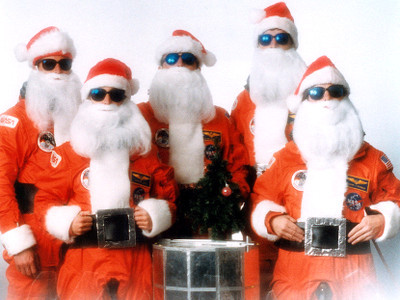




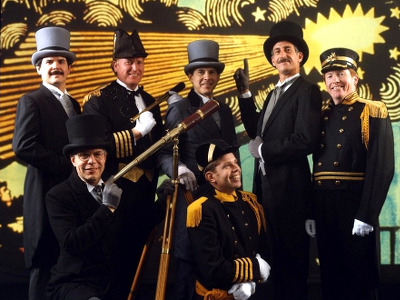

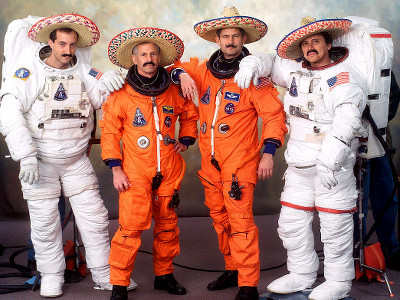


arbitrary astronaut photosets (7/?): favorite shuttle crew gag photos
STS-32 (January 1990) || STS-61-C (January 1986)
STS-40 (June 1991) || STS-92 (October 2000)
STS-46 (July – August 1992) || STS-61-E (cancelled)
STS-54 (January 1993) || STS-111 (June 2002)
STS-6 (April 1983) || STS-55 (April – May 1993)
#dorks! the lot of em!#32 and 61c and 61e are my faves#arbitrary astronaut gifsets#I'll have to do a Gemini/Apollo one next ;)#space shuttle#astronauts#NASA#edit#*#STS-32#STS-61-C#STS-40#STS-92#STS-46#STS-61-E#STS-54#STS-111#STS-6#STS-55#will tag everyone later#I didn't know the M*A*S*H one existed until today and it has improved my life ten fold#austin powers#star trek#f troop
172 notes
·
View notes
Photo

#TBT: STS-61C Launches – Jan. 12, 1986 by NASA's Marshall Space Flight Center
151 notes
·
View notes
Photo

On this day in 1986, the astronauts of mission STS-61C began a six-day orbital odyssey aboard the Space Shuttle Columbia.
(NASA History Office)
173 notes
·
View notes
Text

Smoke on the water (Deep Purple classic rock song reference) & Space Shuttle Columbia’s reflection as the spacecraft lifts off on STS-61C, Jan 1986. It was the first time Columbia had flown since the STS-9 mission in Nov 1983. The spacecraft received 18 months worth of modifications by Rockwell International during its hiatus. The 6-day mission took a crew of seven 98 times about 🌎 as they deployed the Satcom K1 communications satellite. The crew included the 2nd African-American Shuttle pilot & future NASA Administrator Charles Bolden. Also on-board was the 1st Costa Rican-born astronaut, Franklin Chang-Diaz.
#space shuttle#lift off#kennedy space center#aerospace#astronauts#spacecraft#space program#nasa#night flight#1980s#space exploration#space shuttle columbia#shuttle program#space travel#blast off#astronaut#spaceship
24 notes
·
View notes
Text

"The night landing of Space Shuttle Columbia at Edwards Air Force Base and end of the STS-61-C mission. The view is of the shuttle's main landing gear touching down, with streams of light trailing behind the orbiter."
Date: January 18, 1986
NASA ID: STS61C-S-050
#STS-61-C#STS-61C#STS-24#Space Shuttle#Space Shuttle Columbia#Columbia#OV-102#Orbiter#NASA#Space Shuttle Program#Landing#Dryden Flight Research Center#Edwards Air Force Base#California#January#1986#my post
75 notes
·
View notes
Text
Astronaut Mark Kelly announces bid for U.S. Senate
Astronaut Mark Kelly announces bid for U.S. Senate
Kelly was a NASA astronaut who last flew to orbit in 2011 as a member of the crew of STS-134, flown on Space Shuttle Endeavour. Photo Credit: Mark Kelly / SpaceFlight Insider
He won’t be the first, or the last, former NASA astronaut to throw their hat in the political ring. Four-time spaceflight veteran Mark Kelly let the world know on Twitter that he is going to try to join the U.S. Senate. (mor…
View On WordPress
#Apollo 13#Apollo 17#Bill Nelson#Gabrielle Giffords#Harrison "Jack" Schmitt#Jack Swigert#Jake Garn#John Glenn#Lead Stories#Mark Kelly#Mercury Atlas-6#NASA#STS-61C#United States Senate
0 notes
Photo

On this day in 1986, the astronauts of mission STS-61C began a... https://ift.tt/2NgTCUI from @humanoidhistory
1 note
·
View note
Text
Pittsburgh Restaurants
Lucca’s (Italian)
The Porch
Spirits and Tales
Zarra’s
Masala House
Pino’s
Butterjoint
Casbah
Acorn
Soba
Flowers in the Attic (breakfast and lunch)
DiAnoia’s Eatery
Soju
Siempre Algo
Bae Bae’s Kitchen (Korean)
Casa Brasil
MOLA (sushi)
Apericena Wine Bar
Chicken Latino (Peruvian chicken)
Alihan’s Mediterranean Cuisine
Casbah
Pusadee’s Garden (Thai)
Mi Empanada (Argentinian)
Waffalonia
The Abbey on Butler St
Square Café
Morcilla (Spanish)
Girasole
Tupelo Honey (Southern)
Kimpton Hotel Monaco
Taiwanese Bistro Cafe 33
Mercurio’s
Nicky’s Thai
Con Alma
Coffee
Adda’s (tea)
Big Dog
Klvn
Coffee Tree Roasters
Delanies
Commonplace Coffee
De Fer
Jitters Cafe
Round Table Coffee
Rock n Joe Coffee Bar
Black Cat Market
Hilltop Coffee
61C cafe
Cafeteno
Bakeries
Butterwood bake consortium
Sumi’s cakery
Bartram House Bakery
Prantl Burnt Almond Torte Cake
Paddy Cake Bakery
0 notes
Text
NASA Administrator Joins President Biden’s Cancer Cabinet
NASA Administrator Joins President Biden’s Cancer Cabinet
U.S. Representative Bill Nelson (now NASA administrator), STS-61C payload specialist, prepares to photograph individual samples in the Handheld Protein Crystal Growth Experiment (HPCG) on space shuttle Columbia’s middeck. The operations involve the use of four pieces of equipment to attempt the growth of 60 different types of crystals — 12 by means of dialysis and 48 via the vapor diffusion…

View On WordPress
0 notes
